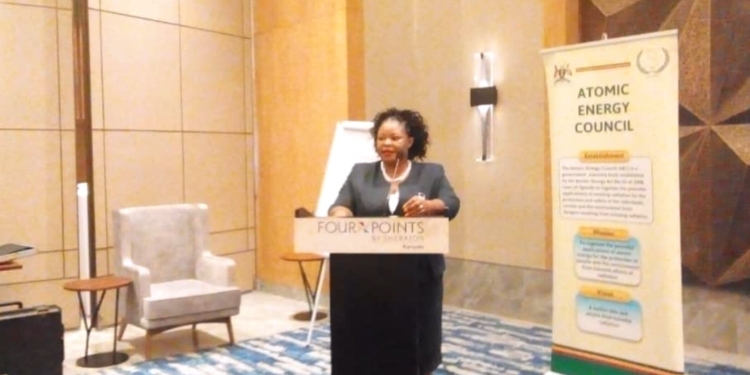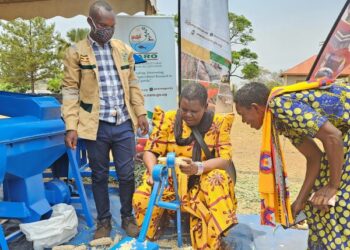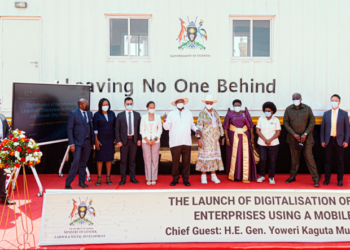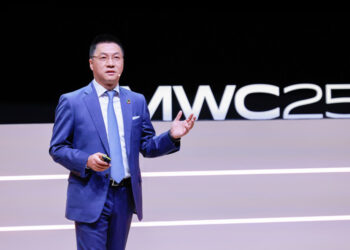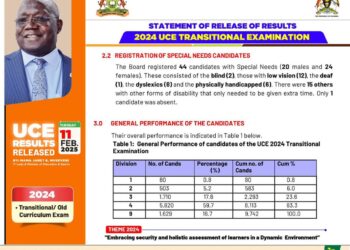Measures to curtail inaccurate and biased reporting on atomic energy applications, and clarifying the actual mandate of the Atomic Energy Council-Uganda (AEC), dominated nuclear discussions at Four Points by Sheraton on Monday.
During that key training, nearly all facilitators emphasized the need for media practitioners to accurately report on nuclear energy applications, to enhance service delivery in various sectors.
Notably, Noah Deogratias Luwalira, the Secretary and Chief Executive Officer of AEC, spearheaded this call while inaugurating this training, dubbed: The Central Regional Media Sensitization Workshop on Regulating Atomic Energy Applications in Uganda.
The one-day workshop, held on February 26th, 2024, centered around the theme “Accurate Reporting On Nuclear Energy Applications For A Better Future.” Selected journalists from media houses across the central region of Uganda, along with program managers, chief editors, and key staff of the AEC participated in the event.
Luwalira highlighted the significance of the peaceful application of ionizing radiation in Uganda, emphasizing its importance in education, industries, medicine, agriculture, security and research.
He acknowledged the collaborative nature of achieving the council’s mandate, stating, “The mandate of the council is simply to regulate peaceful applications of ionizing radiation to protect society and the environment against the dangers emanating from these applications. This mandate cannot be realized by the council solely as a regulator; it has to work with other stakeholders.”
Emphasis was particularly placed on rectifying inaccurate reporting, which has led to a negative public perception of AEC in the eyes of the public. Luwalira expressed hope that workshop attendees would report accurately on the positive uses of nuclear energy in the country, aiming to dispel misconceptions and misinformation.
Luwalira directly addressed the media, stating, “But the reason why we specifically invited you, is to aid in your reporting and help you enhance your understanding of the subject matter. You will report responsibly and accurately about this technology which seem not to be understood by many people. There are many misconceptions about nuclear energy and its applications. particularly when it comes to the context of Uganda, many things are misreported, many aspects are misrepresented by none, but some of us,”Luwarila added.
AEC’s Insights on Uganda’s First 2000-Megawatt Nuclear Power Plant in the Offing
Also while addressing the invited journalists, Natharius Nimbashabira, the Principal Radiation Protection Officer at AEC, shared crucial insights into the government’s ambitious plans for Atomic energy in Uganda, especially on the much anticipated nuclear power plant.
He stated, “Government intends to have an operational first 2000 Megawatt nuclear power plant by the end of 2031, following the IAEA milestone approach.” Nimbashabira went on to explain the progress made in the project, saying, “As I talk now, phase one is done, and the Ministry of Energy and Mineral Development, which is the custodian of this project, is actively involved in site selection.”
He further revealed, “Two potential sites have been confirmed in Buyende and Kiruhura districts. Assessments on these sites are ongoing, and I believe they will be completed soon.” Nimbashabira emphasized the strategic importance of the locations and the government’s commitment to supporting the project.
“In terms of beneficiaries, all professionals have opportunities when this project is operational,” Nimbashabira assured the journalists. “It involves the whole spectrum of professionals—engineers, technicians, and various others. Even individuals like you have opportunities in a nuclear power plant. The project is not limited to one region; it is designed to benefit the entire country by producing electricity that can be transmitted to any part in need.”
Highlighting the government’s proactive measures, Nimbashabira added, “The Ministry of Energy has trained many individuals on nuclear technology, aiming to ensure that the workforce is well-prepared for the upcoming challenges. Additionally, the government is actively strengthening the regulatory authority of AEC to ensure the safe and efficient implementation of nuclear technology in Uganda.”
It should be noted that the IAEA Milestones Approach enables a sound development process for a nuclear power programme. It is a phased comprehensive method to assist countries that are considering or planning their first nuclear power plant
High Assay Low Enriched Uranium (HALEU) is gaining popularity in some of the developed countries as a less costly fuel for putting up nuclear power plants. The current fleet of nuclear reactors runs primarily on uranium fuel enriched up to 5% uranium-235 (U-235).
This fuel which comes as Uganda prepares to build a nuclear power plant is particularly being fronted as most suited for Small modular reactors (SMRs) of capacity of up to 300 MW(e) per unit.
Lynn Ninsiima Advocates Public Education on the Risks of Radiation Misuse
Expanding on Luwalira’s assertions, the Senior Radiation Protection Officer, Lynn Ninsiima, at AEC highlighted specific concerns related to non-ionizing radiation (NIR) levels in Kampala. She disclosed, “Kampala has high risks of Non-Ionizing Radiation levels, with a maximum reading reaching 6.04 percent, still within our regulatory limits. Other districts, including Moyo, Adjumani, and Mpigi, show readings below 1 percent. Uganda’s maximum regulatory reading is at 8.7 percent.”
Ninsiima, further highlighted the potential consequences of failing to inform the public about the dangers of atomic energy. She pointed out that if the media neglects to communicate these risks, the public may misuse atomic energy in their daily activities, potentially impacting the country’s social and economic status.
On the issue of the relatedness between telecom masts and radiation, Ninsiima reiterated, “We have not found any mast with scaring high radiation levels. We have the phobia, but they are scientifically not proved. If we found anything so high, we would have acted.” She emphasized that researches did not provide evidence that telecommunication infrastructures pose harm to humans.
The collaborative efforts of AEC, underscored by insights from the facilitators, aim to create a comprehensive understanding of radiation risks and foster responsible engagement with atomic energy in Uganda.
Do you have a story in your community or an opinion to share with us: Email us at editorial@watchdoguganda.com


